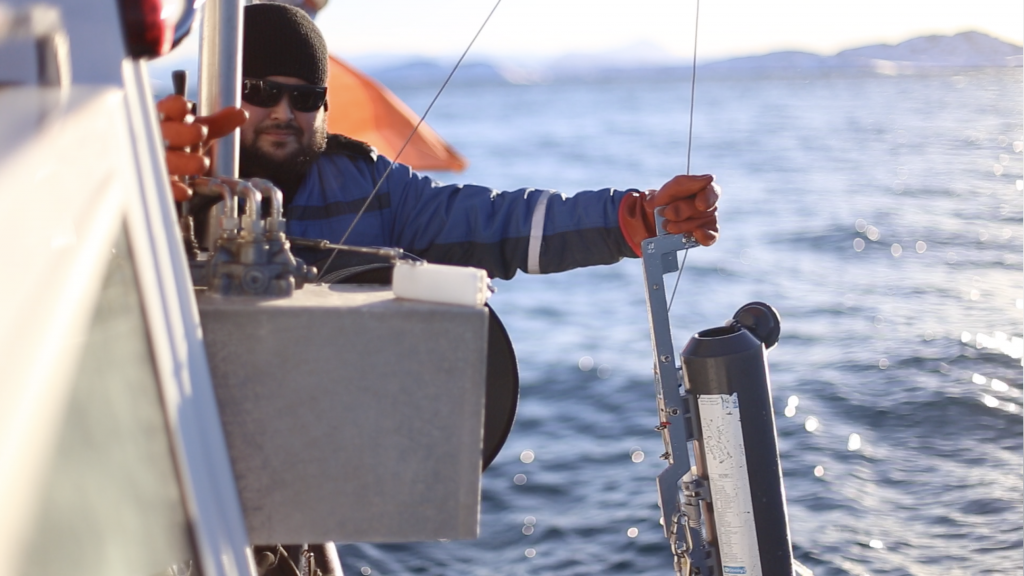Monitoring
Monitoring— or surveillance— is an ongoing collection and analysis of information about a subject. The goal of monitoring is to detect the development of characteristics- for example numbers- about the subject being monitored. When something has been monitored over a number of years, a chronological chain of ordered information can be established. This chain is called a time series. Time series are the backbone of the Greenland Institute of Natural Resources’ work, as they form the basis for the Institute’s assurance of advice to Greenland’s Home Rule.
The difference between the information from a single observation, and the information collected from a series of observations over a period of years, is the amount and usefulness, or value, of the information. A single observation, for example a count of narwhals along Greenland’s west coast, gives information about how many individuals are found along the west coast, and perhaps how they are distributed along the coast. If the count is repeated annually over a series of years, a time series will be developed that illustrates how the population changes and moves over time.

The longer a time series is, the better and more precise the information on the given subject will be. And the better the times series is, the better it will form a basis for advising. It is, however, very expensive to monitor and develop a time series. For example, the counting of shrimp and fish requires the presence of a trawler through 3 to 4 months of the year, and counting the whale population requires the use of an airplane (A single annual count of narwhals costs about 1 million DKK!). For that reason Greenland Institute of Natural Resources only monitors those populations that have a certain economic and cultural significance for society.
Greenland Institute of Natural Resources monitors populations of commercially important shrimp, fish, mammals, and birds in Greenland. In most cases the number of individuals in a population is counted to enable an evaluation of the size of the population, which is a key factor in determining the size of the sustainable harvest. If animals are collected in connection with this monitoring, then their length, weight, age, sexual maturity etc. is also recorded. That gives us important information about the animals growth and reproduction, and thereby on the populations’ condition and growth.
Greenland Institute of Natural Resources carries out this monitoring because Greenland has accepted the obligation to administer its own living resources in a sustainable manner, to insure its biological diversity and because Greenland has assumed a series of international commitments. There is, for example, a stipulation for continued harvesting of eider and whales, that Greenland participates in, and adheres to, a series of international guidelines, and that it monitors the size of the populations. Monitoring is also important in a wider political and economic context.
The time series developed in Greenland are also used outside of Greenland, where researchers, for example, are interested in determining how the sea temperature, fish, and mammals in the North Atlantic change over time. However, the time series are first and foremost a foundation for the Greenland Institute of Natural Resources to provide Greenland’s Home Rule advice on living resources on a scientific basis.

